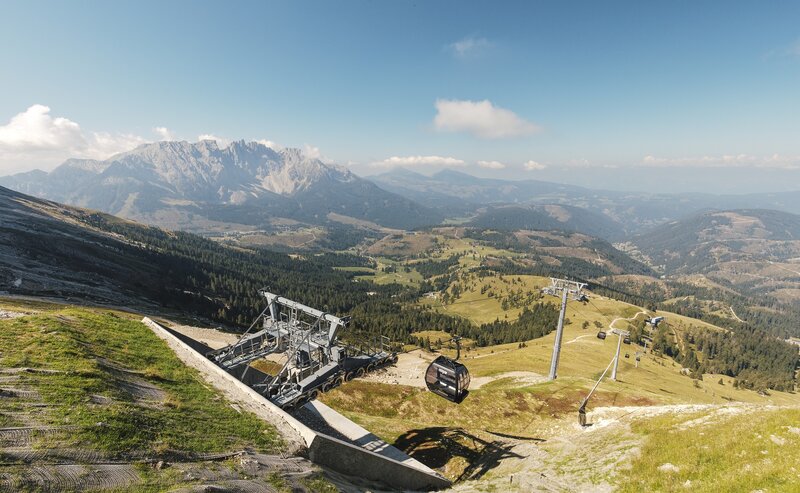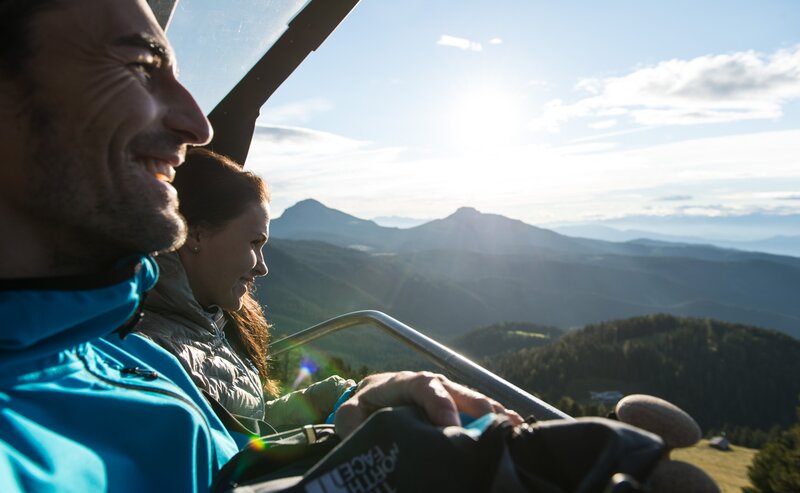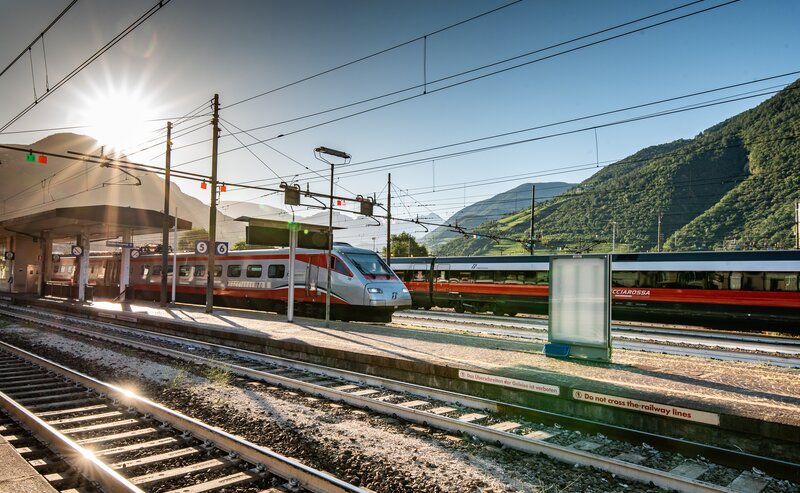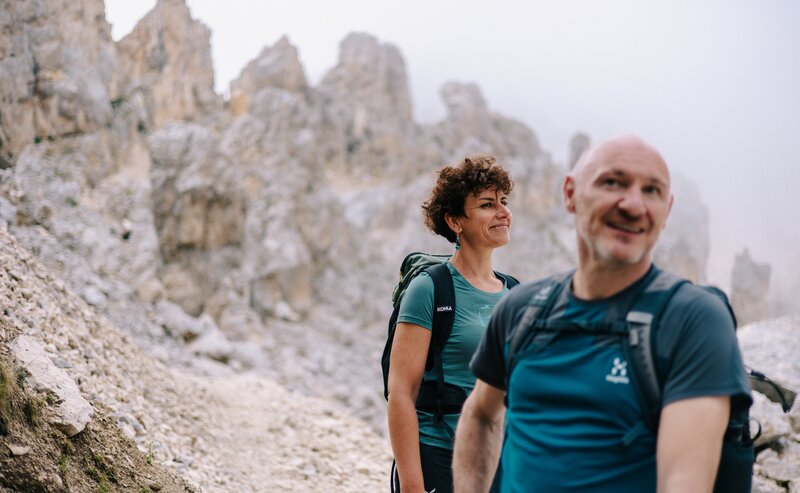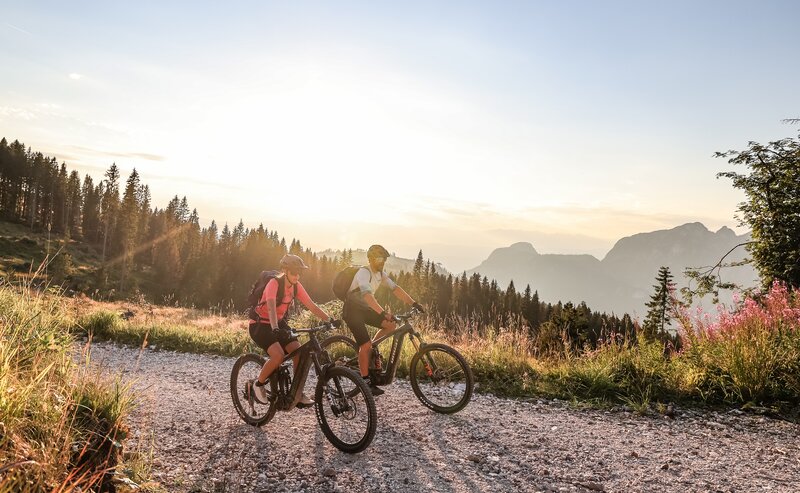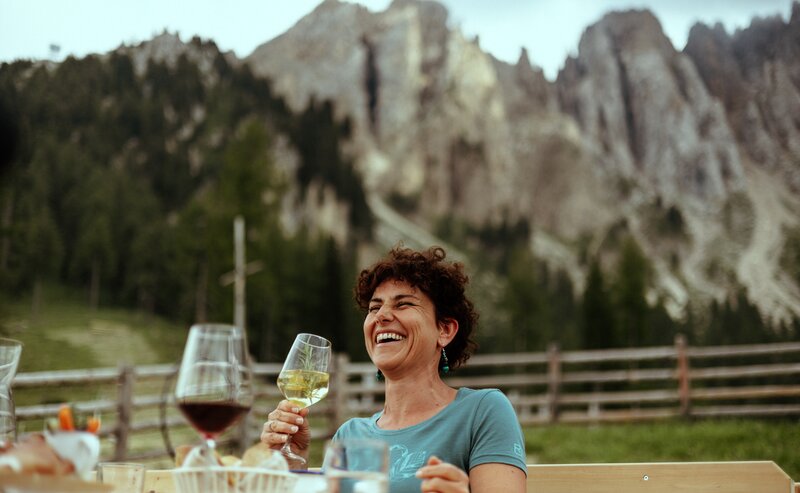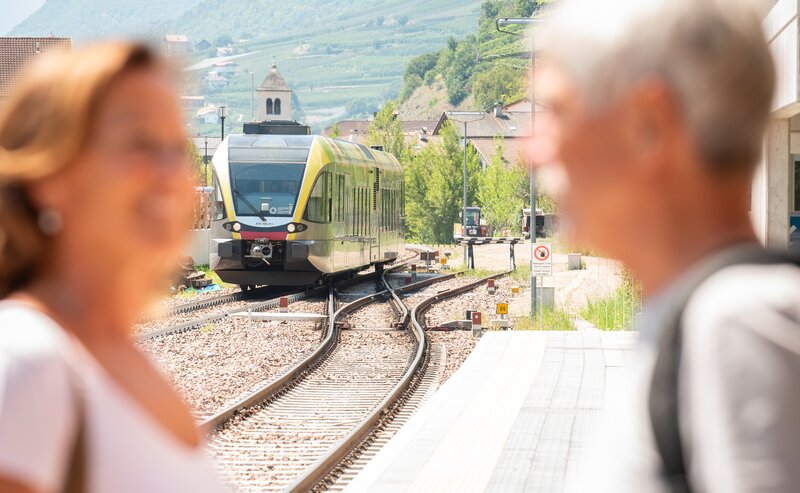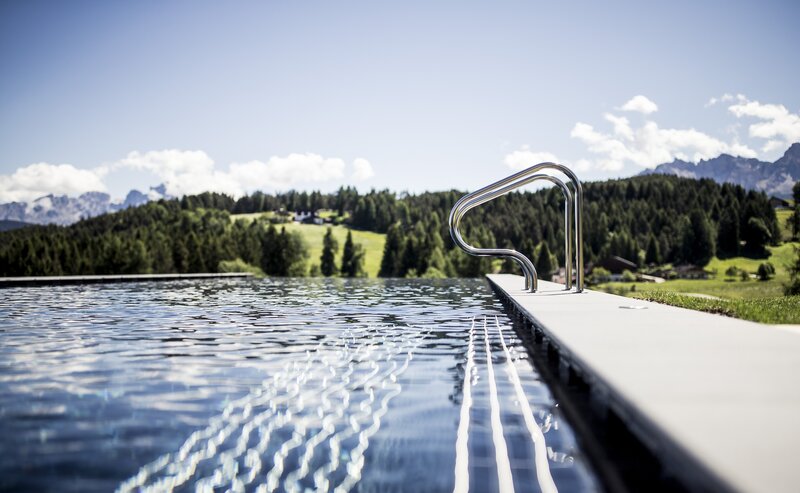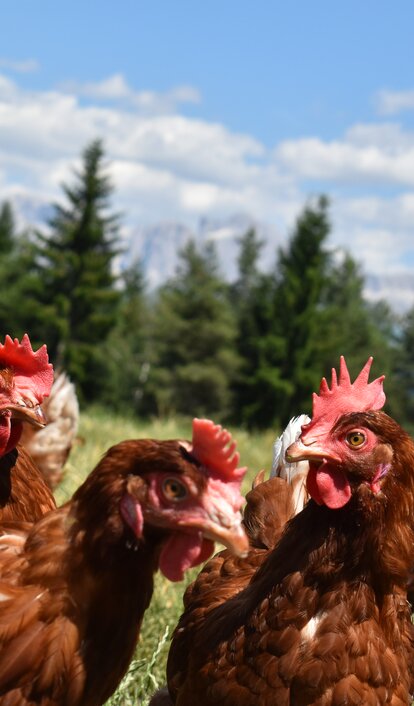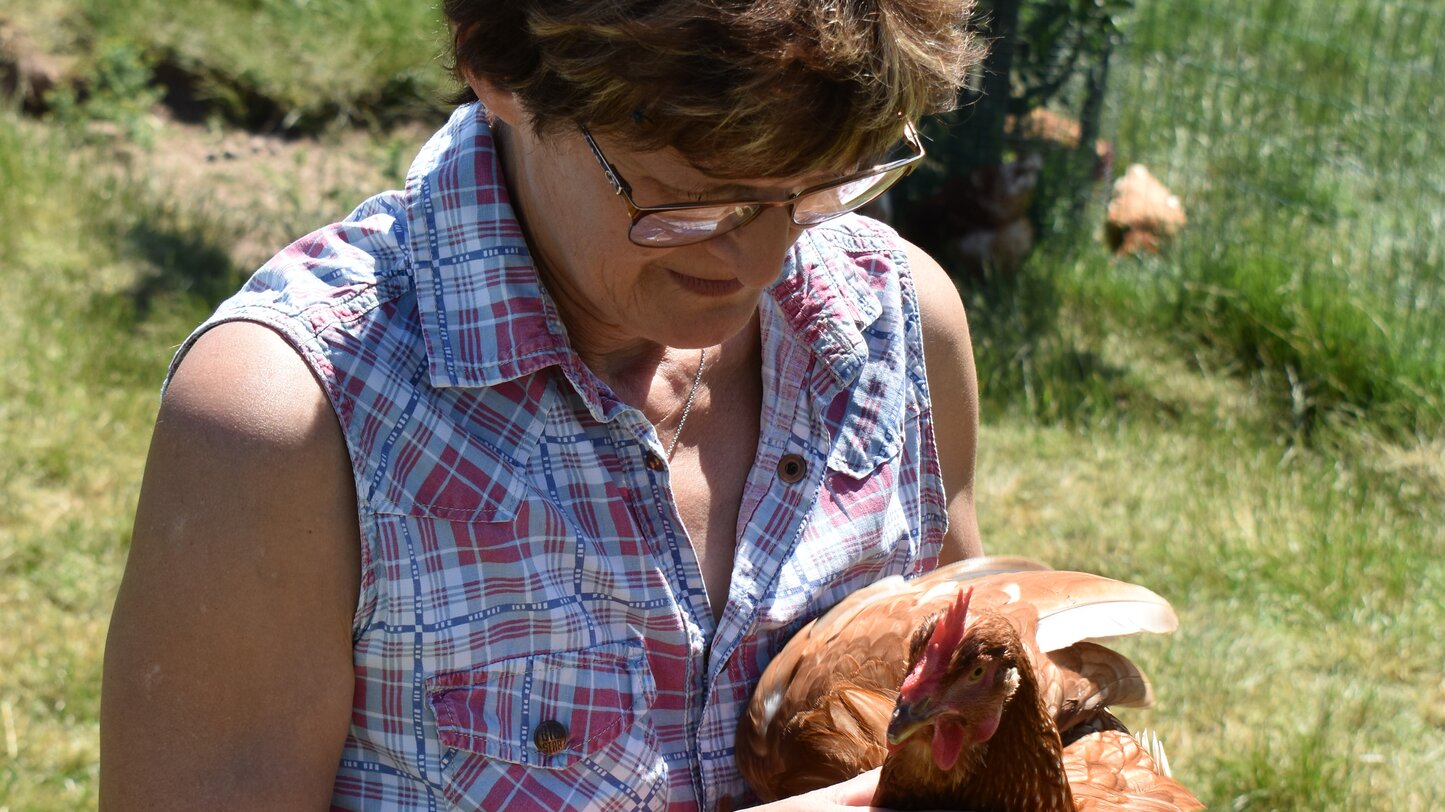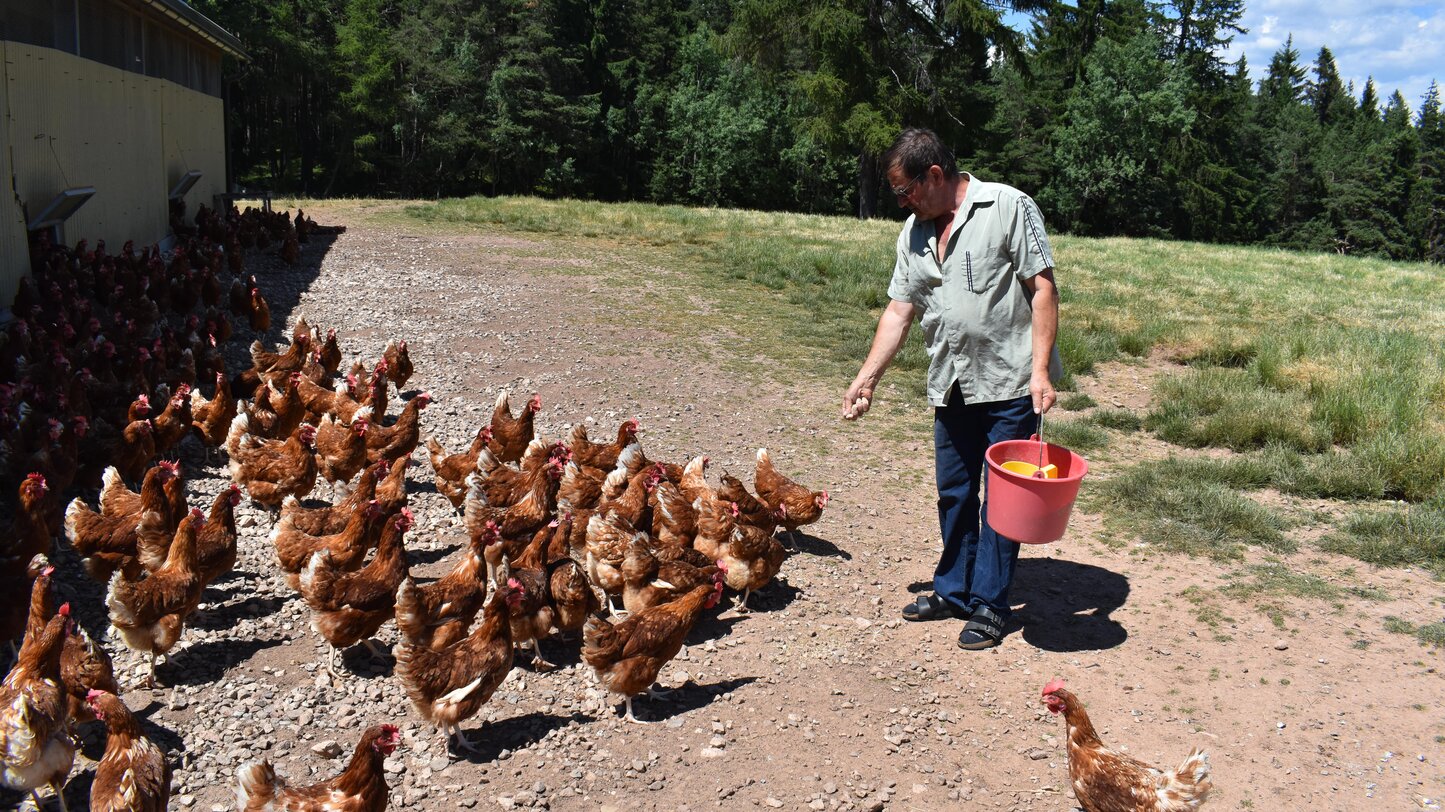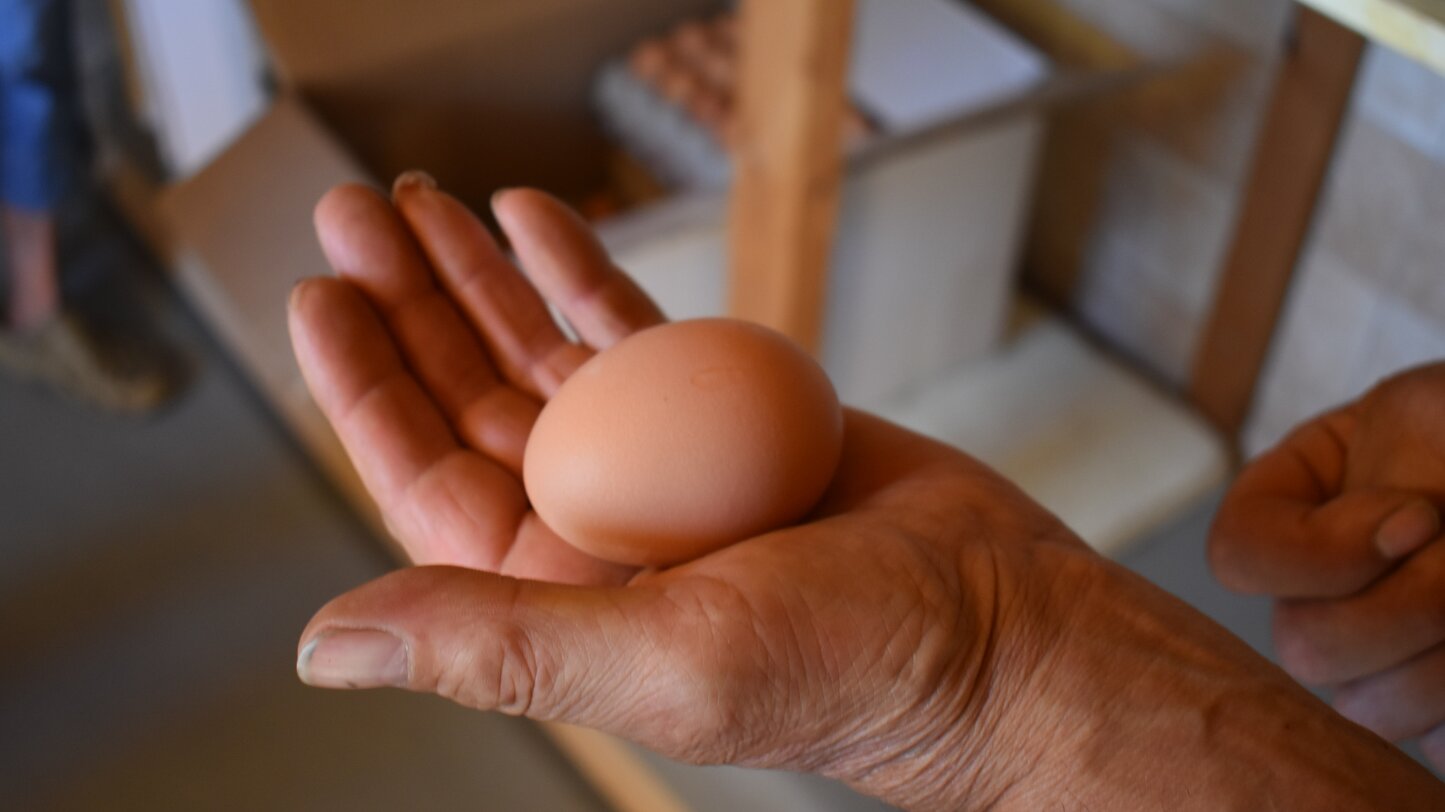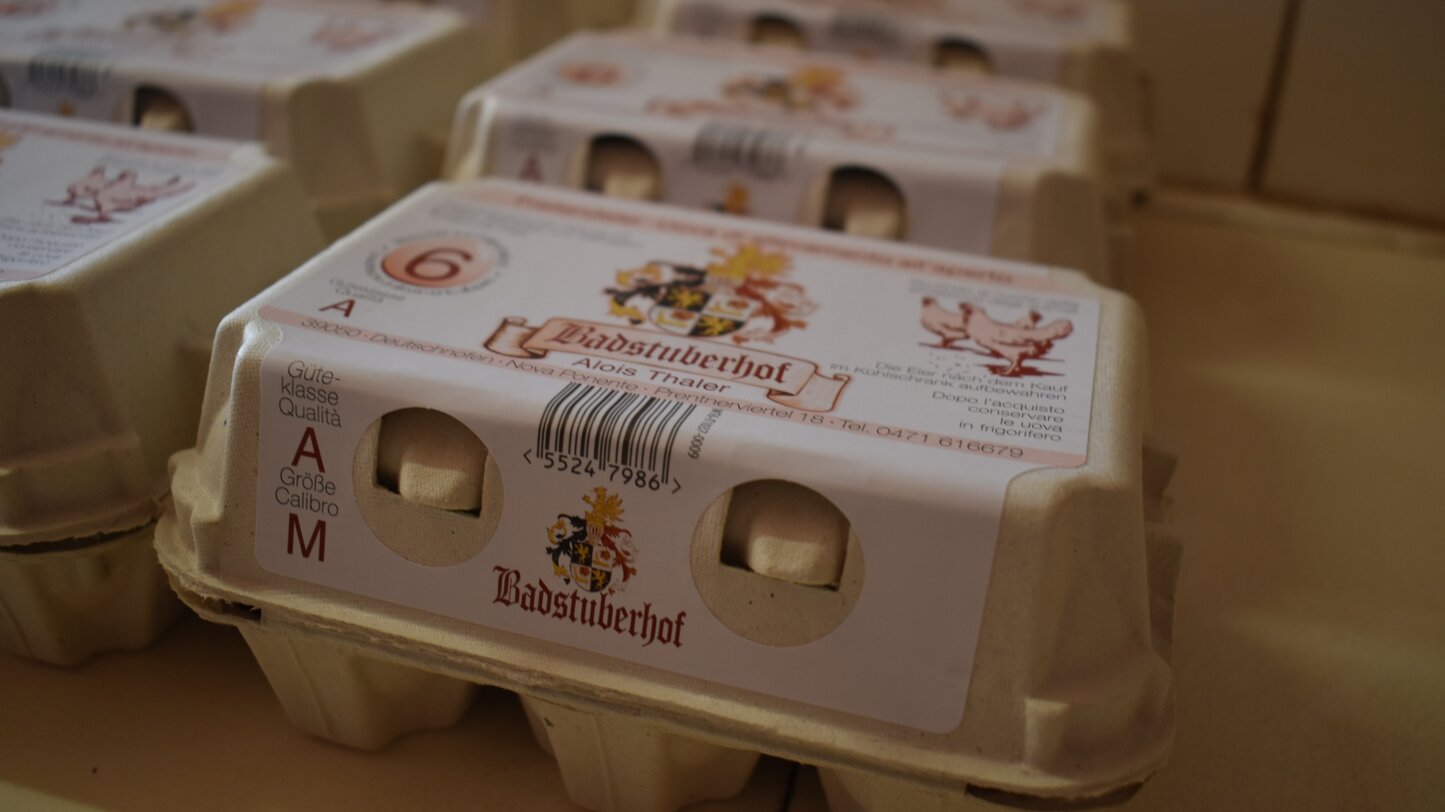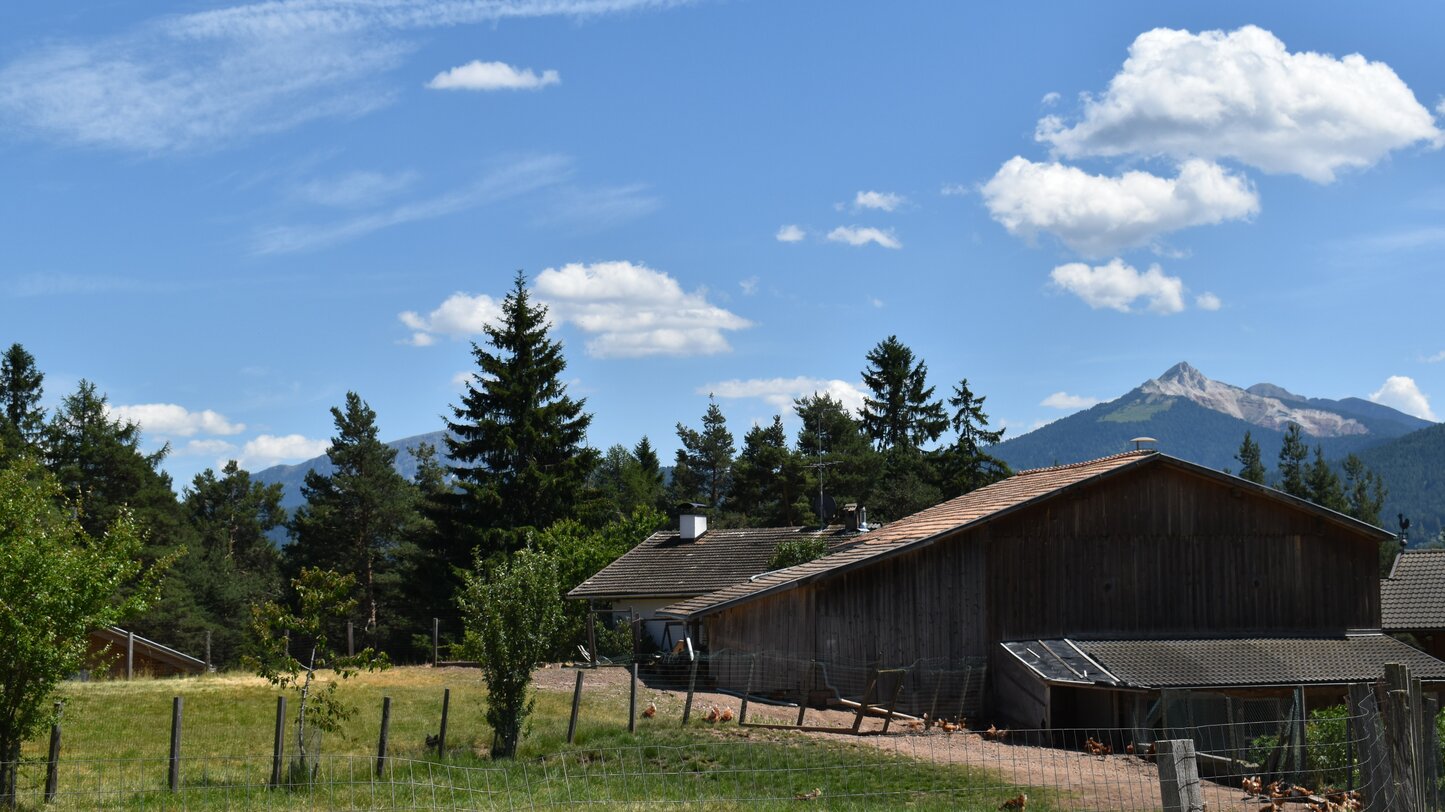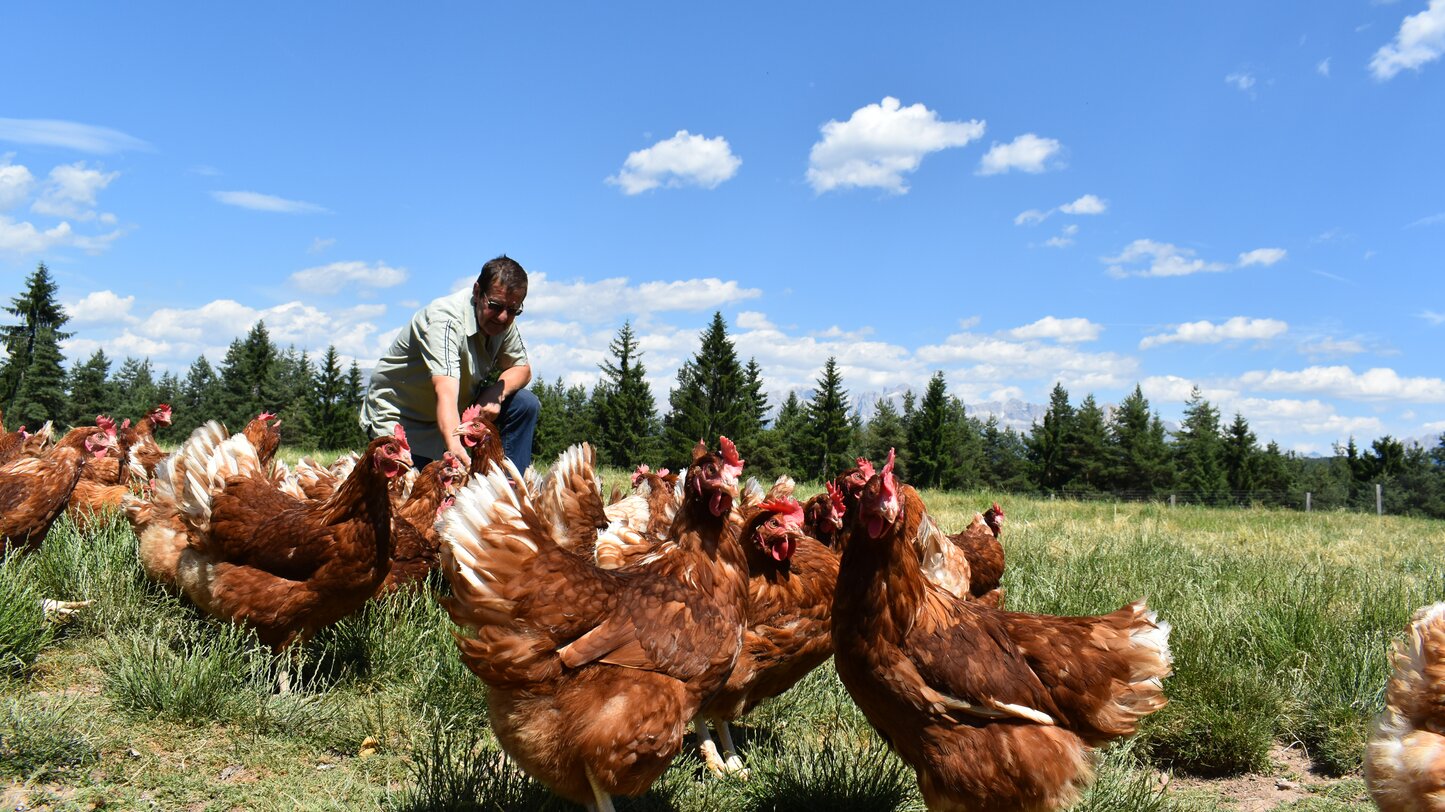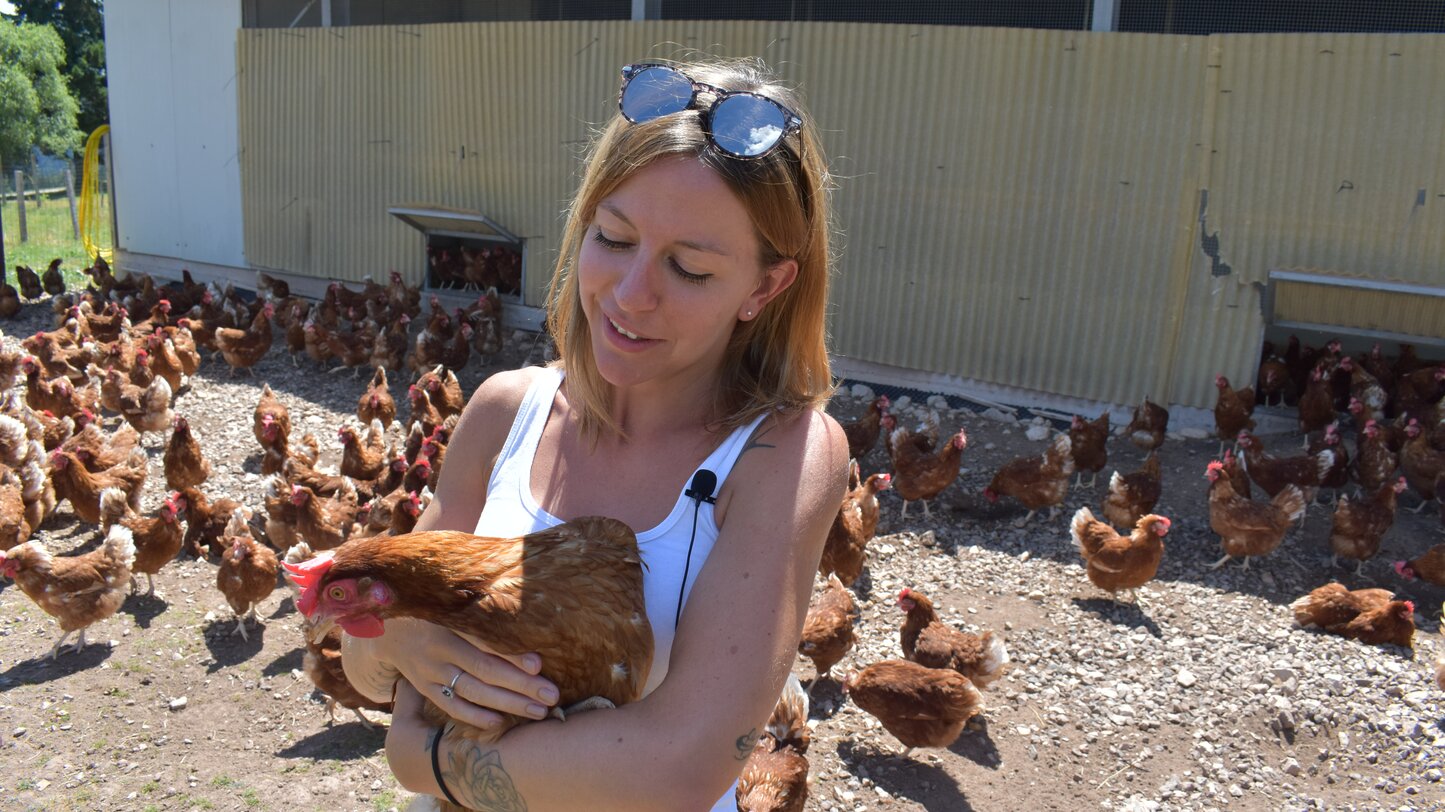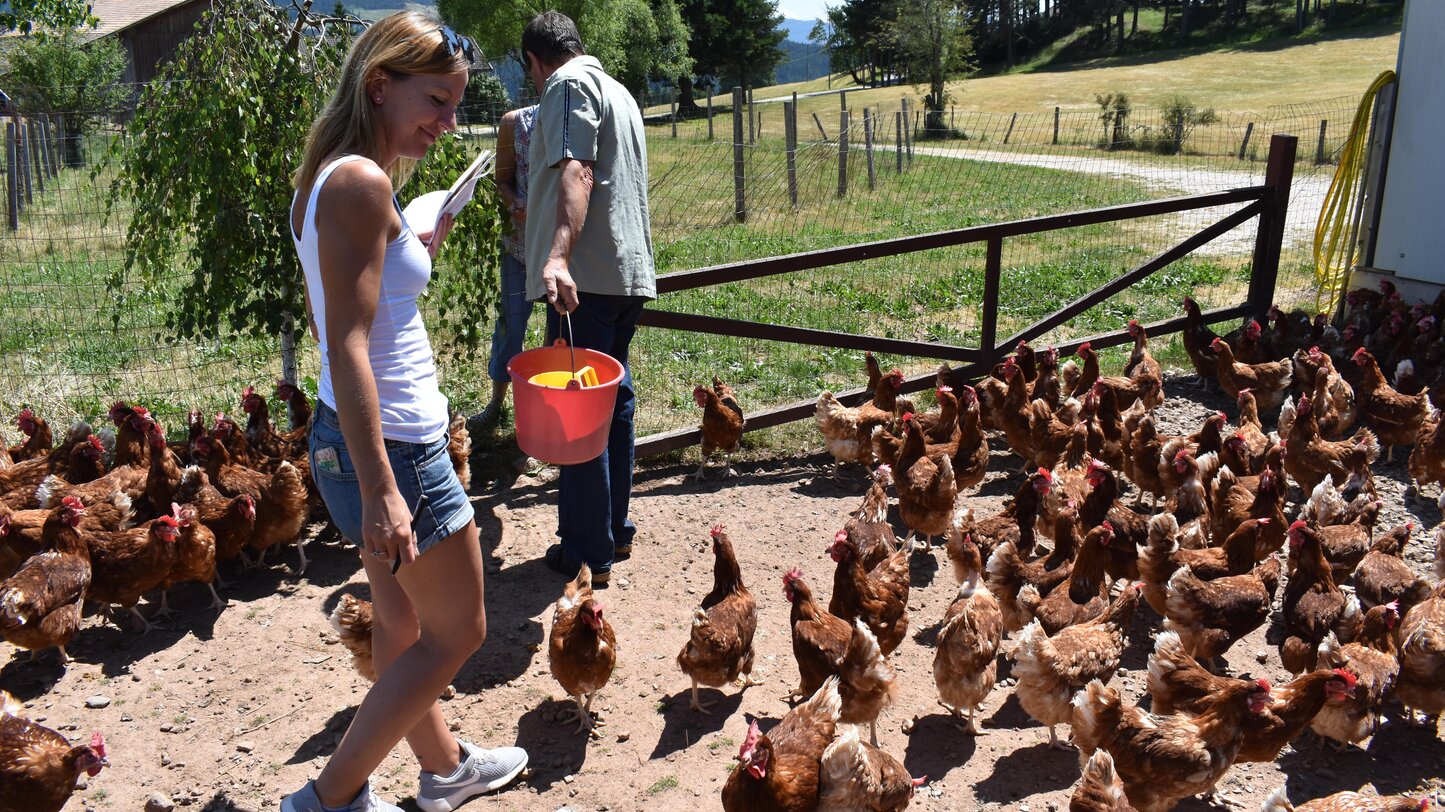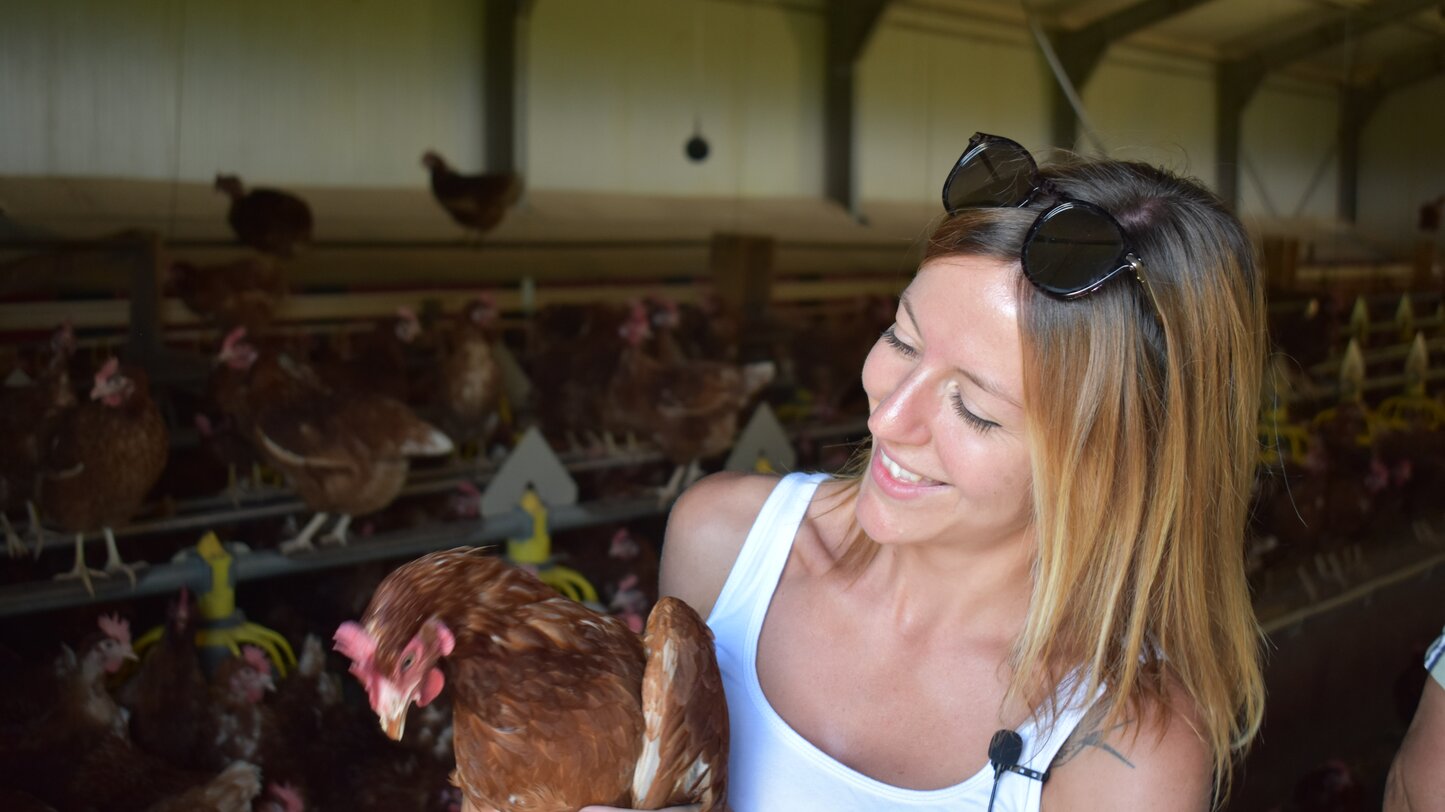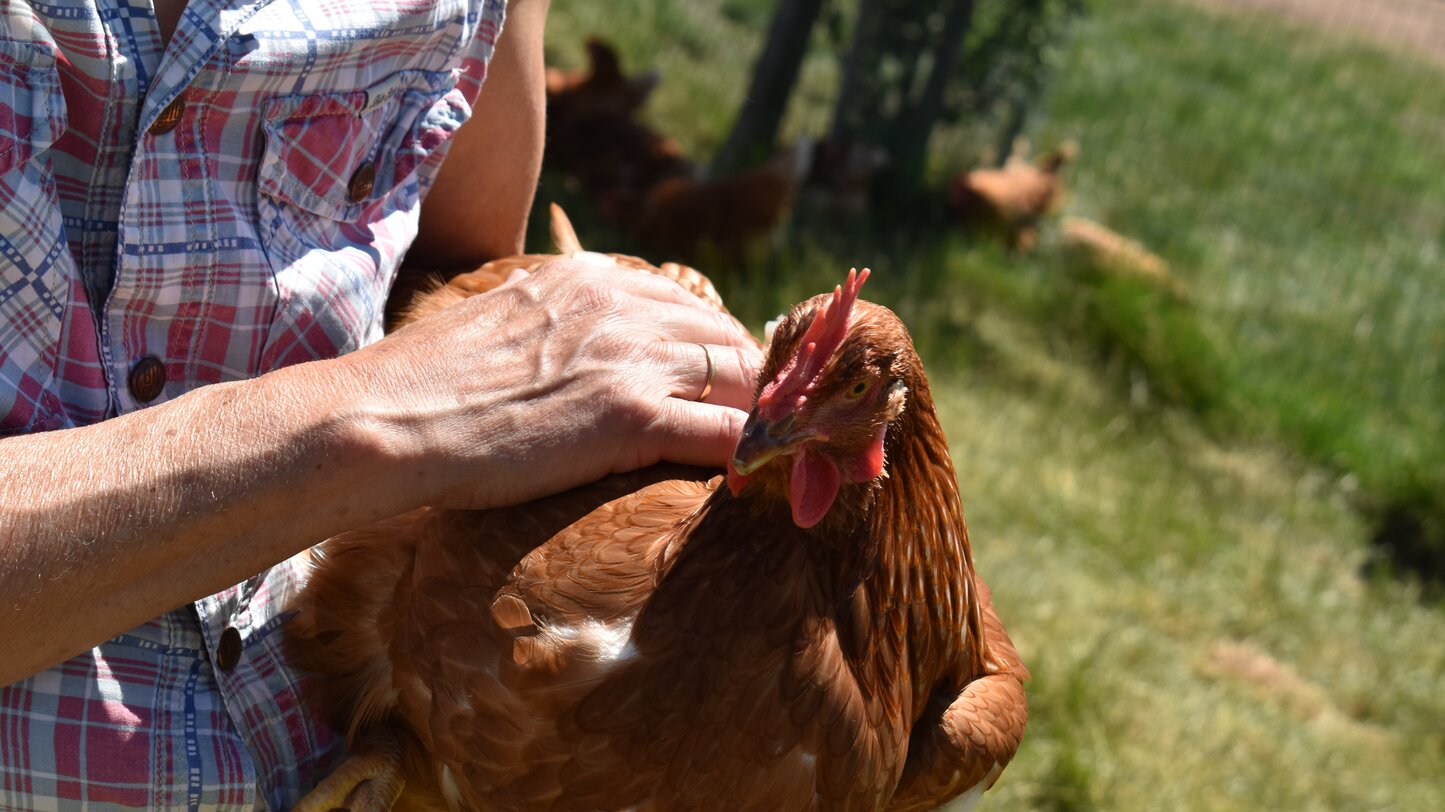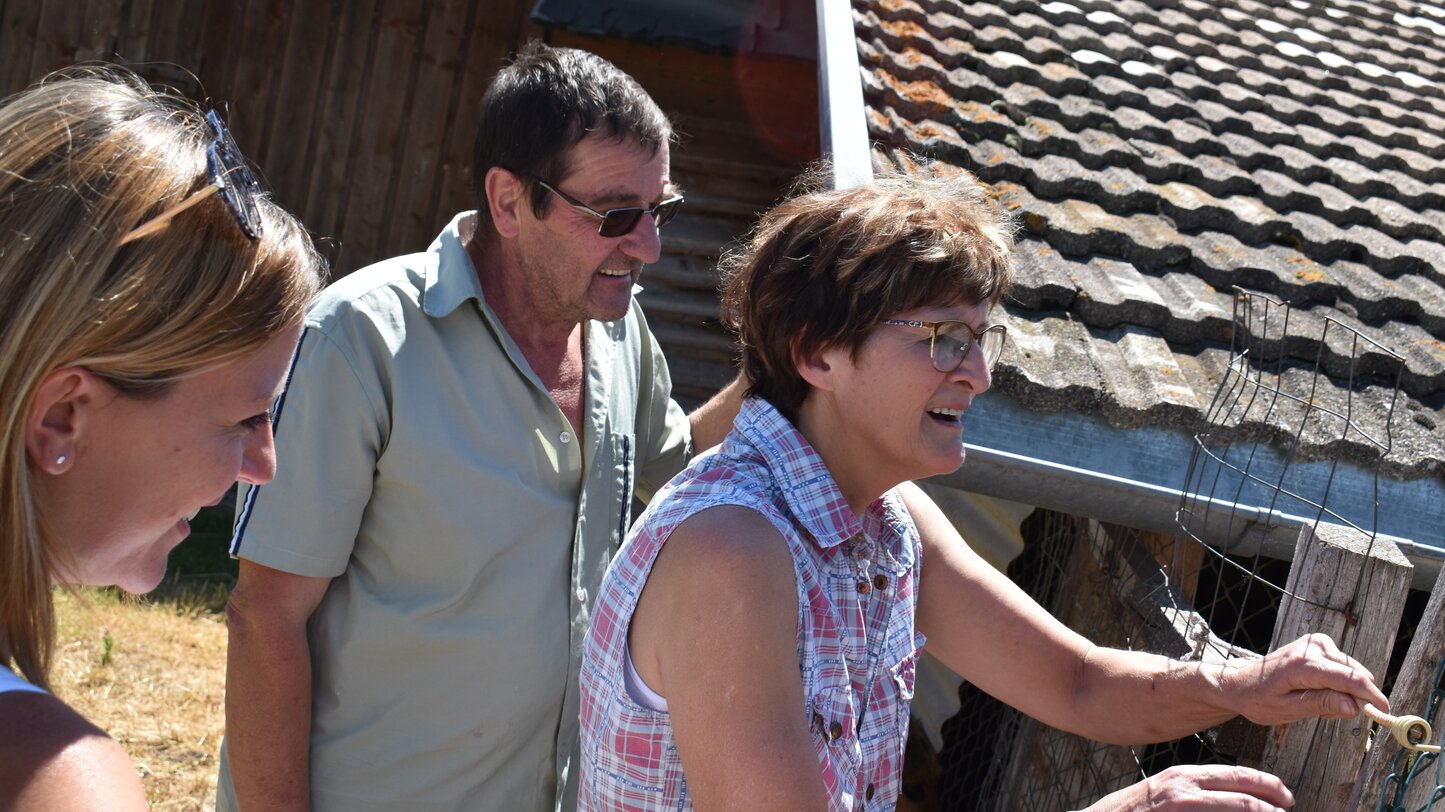A visit to the Badstuber Farm
A trip to Nova Ponente is always a bit like going to a picture-book pony ranch. The only horses that I can see today, however, are grazing on a pasture that I drive past. Today I am heading to the Badstuberhof, a chicken farm in the midst of the idyllic natural world of the Regglberg, home to no fewer than 1,700 chickens!
Mother (and Father) Hen
Luis Thaler welcomes me to his farm and promptly invites me to follow him to where the eggs are weighed and packed – that’s how fast I am catapulted from the office routine to the rural life of a chicken farmer! :) For Luis and his wife Astrid, who affectionately keep referring to each other as “Mummy” and “Daddy” during my visit, this is how their everyday life looks: Astrid places every single egg by hand on her weighing scales – around 1,500 eggs a day. M or L: these sound to me like dress sizes, but for the Thalers this of course means eggs of different sizes.
The small room in which Astrid and Luis spend about three hours a day weighing, arranging and packing their produce is full of six-egg boxes, larger 30-egg trays and packaging materials. Each movement is just right: the egg goes on the scales, the egg goes in the right egg box, the egg box is closed, it is labelled and placed in a larger box. It’s no surprise that they have it all down to a T – the two of them having been doing it since 2001! Their working day has a fixed routine: by 5.30 each morning Astrid is already in the henhouse to collect the first eggs of the day, see whether the feeding machines are working properly – and then let the birds outside, as the chickens at the Badstuberhof are of the free-range variety!
Luis too is busy each morning: he delivers the eggs to a total of fifteen customers in the Val d’Ega, Bolzano and the Val di Fassa. Once Luis gets back to the farm in the late morning, he and Astrid together return to the henhouse – this is when most of the eggs are to be collected.
An egg-xact science
I learn all sorts of new things – and we haven’t even seen the birds themselves! Thaler’s chickens are there solely to lay eggs, which is anything but a random activity. Luis and Astrid tell me for example that a chicken lays an egg six times a week, i.e. almost one a day. These six eggs in fact all grow in the womb at the same time. “Our vet once showed us the ovaries of a dead hen”, says Astrid. “There are always six eggs in the hen, from the smallest with no shell to the finished egg that the chicken will lay the next morning. The laying rhythm is instinctive. The light in the henhouse automatically comes on at five in the morning – and the first hens start laying.” I’m impressed: a hen seems almost like a pre-programmed laying machine!
Not all eggs are alike
They explain further: “As food we use a controlled, GMO-free grain mixture.” The proportion of maize in the diet determines whether the colour of the yolk is yellowish or orange. “Strong sunlight makes the yolks slightly paler”, I am told, “but there is no difference in the taste.”
Luis shows me an egg whose shell is quite “wrinkly”. This phenomenon occurs when the hen is suddenly disturbed, for example when a hawk is circling or a thunderstorm is brewing. While the quality is unaffected, such “wrinkly” eggs are declared as belonging to a different grade and may for example be used in the production of pasta.
“Our young hens of four months old will initially lay small eggs, with the yolk sometimes missing.” Often too there are oversized eggs containing two egg yolks that are not sold in the shops. They are however very much in demand by private individuals who buy directly from the farm.
“After about one and a half years the hens take a break from laying”, say Astrid and Luis. “Their egg production and quality fall off, which is why the birds are collected and mostly sent to other farms. We have to make sure that our business is profitable, of course – we’re not a charity, eh, Mummy?” jokes Luis and proudly shows me the egg cartons with the Thaler family’s coat of arms.
An XXL-sized paradise for hens
Where Luis and Astrid live with their 1,700 chickens is indeed a little corner of paradise. Here, among lustrous green meadows and forests, overlooking the peaks of the Corno Bianco, Corno Nero, Pala di Santa, Latemar and Catinaccio, the Sassolungo and the Sciliar, Luis tells me all about the beginnings of his chicken-farming enterprise: “We used to have some milk cows, then we converted the old cow barn into our first chicken coop with 300 hens. We divided up the old barn and added 400 more. We worked on the business for a while and by 2009 we also had the big henhouse up there with 1,000 hens!” this “Father Hen” tells me. Accompanied by their dog, Luis and his wife show me round the farm. The chickens can freely run around here all day from the early morning on. I have to smile as we approach the new, large henhouse: the few hens outdoors have all gathered in the shade because of the heat, while the others today prefer to stay inside. As Astrid and Luis put some food out on the grass, some of the birds stir themselves – and I gradually realise what the number 1,700 actually means as I suddenly find myself in a sea of brown and red feathers and a cackling singsong! “When the chickens make a singing noise as they cackle, they’re happy, so we’re told,” laughs Astrid.
A cuddle with Berta
The birds are curious and come very close. I can even occasionally feel a hen pecking at my shoelaces. “In the evening, around seven or eight o’clock, we get them back into the henhouse: lots will even go in on their own.” I’m impressed at how the chickens manage their everyday life and how tame they are. “You can catch one and pick it up!” Luis encourages me, with one already on his arm. Will I manage to catch a chicken? I immediately think of movie scenes where people desperately chase cackling hens that wildly flap their wings. But no, I’m wrong: I slowly kneel down and carefully but determinedly place my hands around a chicken and – ta-da! For the first time in my life I’m cuddling up to one of our feathered friends! To my surprise, she feels extremely soft, indeed very soft – who would have thought it? :) It’s a pity that you haven’t got a name, I think, and I secretly baptise my chicken Berta – because I think that hens need a name like that.
We look in the large “antechamber” to the barn before us, where many of Luis’ cackling dames are cavorting, all pretty and neat in their brown plumage. “The glossy feathers are a sign that they are all healthy” explains Luis, visibly proud of his ladies.
A short guide to poultry
I am still impressed by the large number of birds all scurrying around me. They stay in here most of the time, because it is now too hot for them outside on the grass in the summer, or because they do not like going out in the snow in winter. “That’s because they get cold feet,” laughs Luis. With such a large flock, Mother and Father have to pay attention to a host of things: “We must take special care that there are no draughts in the henhouse so that the hens don’t get chicken flu. Egg production then drops drastically, they all get infected and some of the birds will die from the illness. Freely available fresh water is also essential, as is access to food.” In here the hens prance around in the sand, “bathing” in it. Eating some sand is also good for their digestion, I hear.
Finally we have a look at the henhouse where the chickens are doing what they do best: laying! Luis shows me the cereal store, the feeding stations and the nests. “The place where they first lay an egg will then remain their “laying position” for the rest of their lives,” says Luis. The nests are simultaneously all positioned at an angle so most of the eggs drop directly onto a kind of conveyor belt that in turn leads to a separate room – a great help to Luis and Astrid at 1,500 eggs a day, although they also collect numerous eggs directly from the henhouse. The last few eggs for today are gathered in the afternoon – and I get to see! :)
I have a tickling sensation in my nose, so I quickly once more cuddle with another chicken – this time it’s Luisa – then it’s off outside!
A life spent living with chickens
Luis and Astrid have a big job on their hands every day – they never take long holidays. “If we do take a break, it’s for a wellness weekend”, Astrid reveals over a glass of elderberry juice before I set off back again, “but I’m anyway happiest up here on the farm.” Their children can also lend a hand if needs be. “Our son will one day take over the chickens.” Nor is it such a long way off, as Astrid and Luis have only two years to go before they retire. “We certainly won’t be too far away”, Luis smiles. And, from what I know of “Mummy” and “Daddy”, I am sure I can take them at their word.
